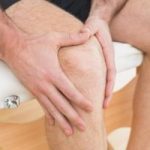 Here at Bel Marra, we are committed to bringing our readers the latest in health information, and for our weekly health news roundup, we have compiled a list of some of our most helpful articles. Here you will learn about the reasons behind lower abdominal pain in men, what causes a stiff knee, treatments for arthritis pain, and why you may be throwing up yellow bile. Whatever aliment you are experiencing, you can be confident that we here at Bel Marra have your health in mind.
Here at Bel Marra, we are committed to bringing our readers the latest in health information, and for our weekly health news roundup, we have compiled a list of some of our most helpful articles. Here you will learn about the reasons behind lower abdominal pain in men, what causes a stiff knee, treatments for arthritis pain, and why you may be throwing up yellow bile. Whatever aliment you are experiencing, you can be confident that we here at Bel Marra have your health in mind.
Lower abdominal pain in men: Causes and treatment tips
Lower abdominal pain is experienced by both sexes, but the causes can vary. The abdominal pain in men may be due to chronic diseases, urinary tract infections, or even digestive tract conditions. Research estimates that the majority of men who experience abdominal pain never seek treatment, as they are more likely to use over-the-counter or herbal remedies to alleviate pain, rather than finding a doctor to discover the underlying cause of their pain.
Advertisement
Abnormalities in the abdomen may cause any number of different symptoms, including the type of pain. One may not give that much attention to the general feeling of pain over the abdomen, but specific types of pain, such as sharp, localized, or radiating pain, may signify severe complication and should be assessed by a medical professional. Continue reading…
 Stiff knee after sitting, running, and exercising: Causes and treatments
Stiff knee after sitting, running, and exercising: Causes and treatments
Knee joint stiffness can plague us at any age. It may be caused by a recent injury, an acute infection, or even a chronic disease such as arthritis. Knee stiffness often restricts our range of motion, limiting our performance and our quality of life. To better understand how a stiff knee can develop, we will have to take an in-depth look at the anatomy of the knee joint itself.
The knee is stabilized by two pairs of ligaments, they are the:
- Anterior and posterior cruciate ligaments
- Medial and lateral collateral ligaments
The knee joint also sits on two pieces of cartilage, which permit the bones of the knee to move smoothly against one another. They are known as the menisci. Continue reading…
 Spring cleaning for your liver
Spring cleaning for your liver
Spring is the season of renewal and is a good time to tune up our body after a long winter. Tired of hiding from the cold and perhaps recovering from a respiratory infection that is easily caught this time of year, we want to recharge ourselves with energy and give our body a health boost. No wonder spring cleanups are no longer just about cleaning your house and opening all the windows to let the fresh spring air in. Spring is a popular time for all kinds of detoxes, cleanses, and diets, often targeting one of the most important organs in our body, the liver.
You see, the liver is involved in so many different functions—nutrient synthesis, hormone processing, cholesterol and bile production, to name just a few—that once it stops performing its best, our health gets affected in many different ways. (Miracle fruit lowers cholesterol in 30 days.) While detoxing may be a good seasonal practice to clean your liver, you need to maintain a healthy liver-friendly lifestyle to keep it in shape. The recommendations below will help you adjust your habits and improve your liver health in the long run. Continue reading…
 Arthritis pain? Try this
Arthritis pain? Try this
Arthritis is the bane of old age. Inflamed joints, swelling, pain… Even if you don’t have arthritis, you surely know a few people suffering from this chronic disorder. An umbrella term referring to over 100 types of joint disease, arthritis affects about 53 million adults in the U.S. alone. Medications are often prescribed to ease the symptoms and improve patients’ quality of life, while surgery is an option in more severe cases.
Advertisement
Yet, if you’re looking for a natural way to alleviate your arthritis—or if you’re being proactive and want to take some preventive measures—look no further than your diet. As mentioned, arthritis is an inflammatory condition, meaning that you can reduce your pain and other symptoms by consuming a diet rich in anti-inflammatory foods. Take note of the following kitchen staples as they can make your life easier and less painful. Continue reading…
 What causes throwing up yellow bile and how to stop it
What causes throwing up yellow bile and how to stop it
Our stomachs are filled with acid so corrosive that if it were to be placed on a wooden table, it would eat through it. Thankfully, however, our bodies are advanced enough to account for this potential danger, creating a protective mucus lining that covers the inside of the stomach. This gastric acid is only one component of the fluids required for adequate food digestion, as another fluid made in the liver and stored in the gallbladder is required as well.
This fluid is called bile, a digestive fluid produced by the liver that helps you easily digest and absorb fats. Under normal conditions, bile stays in the gallbladder and is released into the small intestine once it senses fatty food has been eaten. Gastric juices in the stomach are normally held a bay by gastric sphincters located at the lower esophagus (lower esophageal sphincter), and near the entrance of the small intestine (pyloric sphincter). Bile is never found in the stomach during normal circumstances, but if a condition were to occur that resulted in the pyloric sphincter opening abnormally—allowing food from the small intestine and the stomach to mix—it can result in a gastric fluid combination that appears yellow, especially when vomited. Continue reading…
